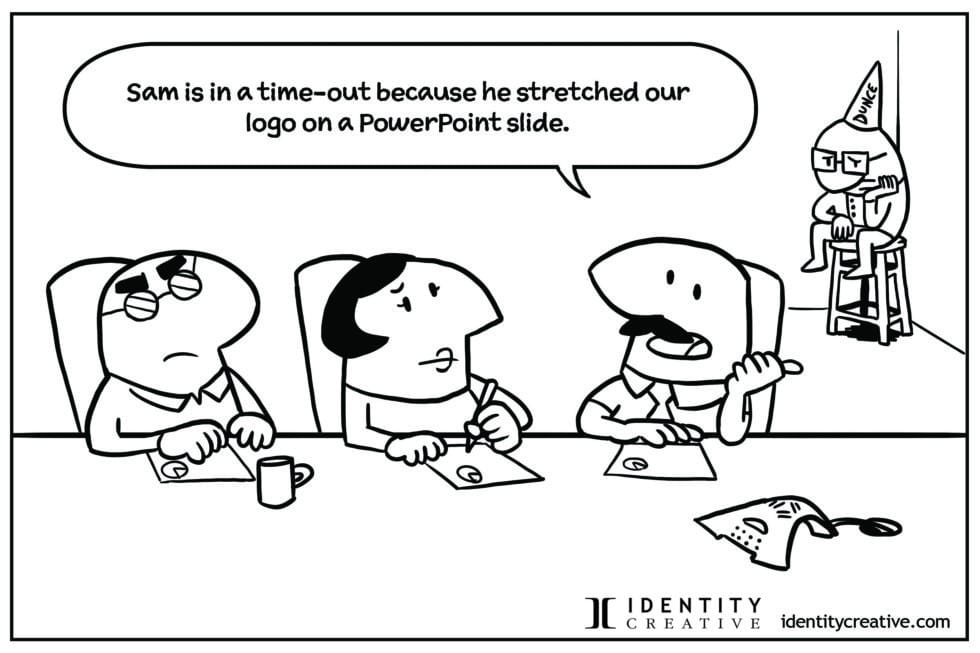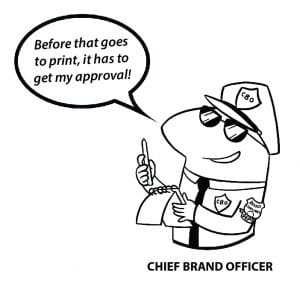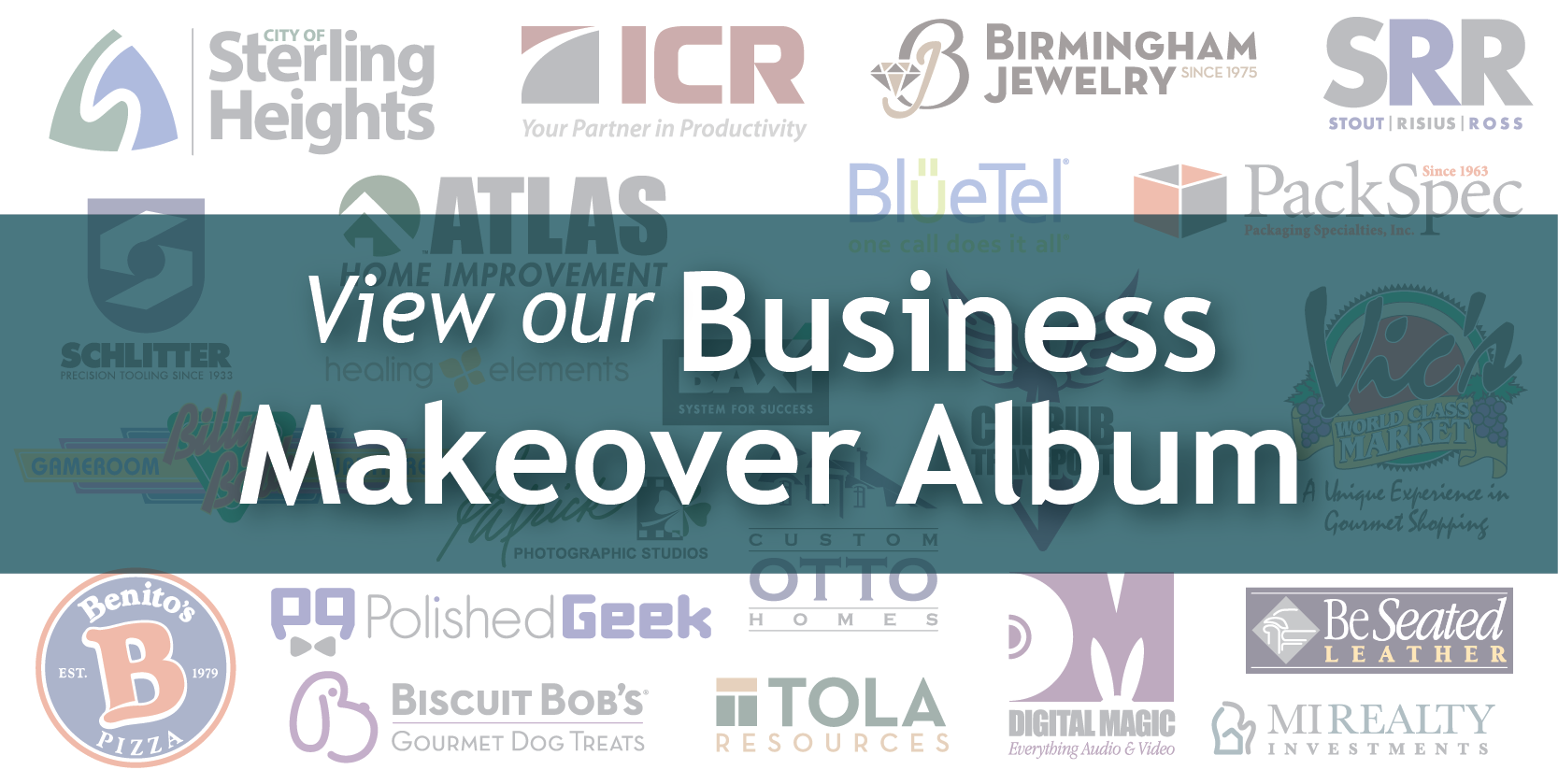Is there someone in your company to oversee and manage brand assets?
How intentional is your team when it comes to keeping your company’s brand assets organized and up-to-date? Do people struggle to find the latest version of anything?
Has your company has been haphazardly maintaining the brand guidelines for your logo and company color?
Are your social media pages suffering from disjointed profiles, headers, and posts?
Answered “yes” to any of these? It means that it’s time to get into an organizing mood! The advantage for startups, or companies who are rebranding, is that this is the perfect time to build a brand asset management plan that can adapt and grow with the business.
Take Your Small Business Brand Seriously
The McDonald’s arches. The Nike swoosh. The Starbucks twin-tailed mermaid. What do these logos have in common? First, they are universally known and easily recognized.
As brands, their commonality doesn’t end there. Companies of their stature work excessively to manage their brand assets. Small businesses need to be just as diligent. Before we discuss how to manage your company’s brand assets, let’s define them.
What are Brand Assets?
Brand assets are the tangible and intangible elements that are unique to your company or organization. They serve as signals for potential customers or clients to recognize your business consciously and unconsciously. They contribute significantly to the experience people have with your brand.
“A brand symbol is anything that leaves a mental picture of the brand’s identity.”
– Richard Branson
Tangible Brand Assets
Think of tangible brand assets as anything on which you can put your logo.
Examples include marketing & sales collateral, packaging, wearables, website and all digital content, video, imagery, office space, furnishings, signage, vehicles, and promotional products. (For a more comprehensive list, you can download our Rebranding Checklist here.)
Intangible Brand Assets
Intangible brand assets are the abstract pieces of your brand. They are the qualities and attributes that contribute to your company culture and influence the way you create value and serve your customers.
Examples of intangible brand assets include core values, purpose, mission, vision, key differentiators, buyer’s journey, and customer service.
The intangible assets inform the company’s visual representation, from the logo and message to customer services and pricing. When an organization has a clear grasp of its purpose, values, and mission, it is the foundation for a great brand. Likewise, when well-executed, they carry a personality that people perceive and with which they can feel connected.
These brand assets are a central part of the experience someone has with your business. Yet, these assets are exponentially more challenging to manage.
Values, vision, and customer experience have to be internalized by your employees. Who can number the books, programs, and consultants who challenge leaders to codify these abstract brand assets? Even more, once a leadership team has made the investment to nail down these assets, do they have a plan to assimilate them into their organizations? Do they have a way to measure and manage them? It’s a massively tough challenge.
The Brand Blueprint is a tool we’ve created to help leadership teams get vital intangible brand assets on one page so every employee can readily access them. It lays a foundation for the leadership team to become the voice and action of the brand blueprint. When it’s lived out with authenticity, passion, and consistency, it’s powerful momentum for building a great brand.
Why is Managing Brand Assets So Important?
The primary goal of brand asset management is maintaining consistency. In our book, Ready. Brand. Launch, we talk about the two goals of branding: build credibility and be remembered. No one will do business with you if they don’t trust you.
A quick way to bruise your brand’s credibility is to be inconsistent. Create a foundation of trust with your customers by maintaining a consistent look, message, product, and customer service.
Small businesses take a hit when leadership allows the logo or message to suffer even the slightest variations. On a subconscious level, we know serious brands. No one would alter the logo of a major brand.

Benefits of Managing Your Brand Assets
Are employees using a color that is “close” to your company’s color scheme in their Word document? How much time is lost looking for the latest version of a sales sheet? Did someone let the printer add a drop shadow to the logo on the mugs?
Every marketing piece is aligned with the brand visually.
Creating a brand asset management system will enable your team to maintain a consistent look across the board. A disjointed brand can happen so easily: a few salespeople jerry-rig a PowerPoint presentation, an administrator inadvertently sends the wrong logo file to the tradeshow vendor, or a well-meaning graphic designer decides that the company’s logo looks better with a drop-shadow.
All employees are aligned with the brand message.
Brands that continually and accurately promote the company’s unique identity will have a competitive edge. In addition, these assets play a key role in brand awareness, leading to increased sales.
Critical brand consistency is maintained.
Well-managed brand assets mean that everyone on your team is on the same page. They have the correct logo file at their fingertips, understand and use the company’s brand guidelines, access the most recent version of the sales presentation, and communicate a consistent message in every customer interaction.
So how do we manage the elements that make up your brand?
Every Company Needs a CBO (Chief Brand Officer)

Your CBO needs to be someone who has an eye for consistency with color and fonts. We have armloads of stories where people have sent their logo file to a print, sign, or tradeshow vendor and find that they’ve used a different font or altered the color. Not acceptable. Ever.
When a vendor sends a PDF proof, your CBO must review it carefully for variations from the brand standards guide. It happens incrementally when a company finds that its brand has become disjointed due to minor changes over time.
Management and organization of your brand assets are crucial to keeping them consistent and readily available to everyone in your company. Deputize your CBO to control the company’s brand assets and train all employees in their proper use.
In time, your whole team will enjoy the benefits of an organized brand asset management system.
- Your logo and brand style is consistent across all platforms (read our blog on logos and consistency)
- Employees know where to access content and are confident that it is up-to-date
- All of your content is aligned, and no one is free-wheeling their personal design style on your brand
- Well-organized Media Libraries provide brand-aligned content that can be repurposed and not forgotten. You’ve invested high-res images and custom graphics. Keeping “evergreen content” accessible is a boost to your marketing and sales toolkits.
- Creating fresh content is easier because brand-aligned assets are at your fingertips.
- When there is a transition to a new marketing director, the brand asset management plan will make for a seamless transition.
TIP: Website and Marketing Software: Anticipate the kind of image, graphic, and video files you will be adding to your website and email marketing or automated marketing software. These platforms will require you to upload files to a Media Library. Create a file and labeling system that can scale with your marketing and sales efforts.
5 Steps to Take Control of Your Brand Assets
1. Make a list.
Grab a spreadsheet and in the first column, type a list of relevant brand asset categories. Here’s a start:
Brand Identity System: Logo Files (Raster & Vector files, Horizontal & Vertical orientations, Color Palette, Fonts)
Brand Identity Standards and Usage Guide
Stationery System/Print and Digital
– Letterhead, Envelop, Business cards, Email Signatures
Brand Word Bank/Messaging/Tone
Internal Communications
Image Library
Video Library
Online: Website, Email Marketing Templates
Social Media Pages
Infographics
Marketing Collateral/Print and Digital
Sales Collateral/Print and Digital
Message Library
Propriety content
Manuals
Training
Sales Objectives
Marketing Plans
Advertising Channels
Across the top row, create columns that are relevant to your company, such as:
Description
Location
File Format
Needed by Teams (who uses it)
Date Created
Date Expires
Owner (or person responsible)
2. Audit the Company Files
If you have an older business, combing through your files might feel like you’ve walked onto an episode of Hoarders. Take a deep breath and start by identifying what is current. You may find it easier to pull out the relevant content and archive or delete the rest.
3. Make a list of brand assets that need to be updated
While you are working through the files, you’ll likely be surprised to find items that have been forgotten and are redeemable with a few content and design tweaks.
Updates could include imagery, graphics, and messaging, particularly if your offerings have changed, you’ve expanded your market, or you are updating your look across all your brand assets.
4. Make a list of brand assets that are missing
During the process, you may notice that there are gaps in your brand assets. Small businesses often lack the necessary tools needed to maintain brand identity standards. For example, a Brand Standards Guide will include all the specifications of your logo and brand elements, such as the company font, colors, and how and when to use them to maintain a professional brand image.
5. Organize your brand asset files, or create a fresh brand asset management system
Whether you prefer a mind map or a spreadsheet, use the lists you’ve made above to identify the kinds of files you’ll need—and anticipate needing in the future—and map them out. The diagram below is an example of how you can organize your brand asset management system. (You can also view the Brand Asset Management Plan mindmap live here.)

Managing Digital Brand Assets with Large Teams
For most small businesses, the digital asset management (DAM) system, such as ShareFile or Google Workspace, is enough to keep their digital brand assets in check, as long as someone is monitoring updates and archiving or deleting outdated collateral.
As your team grows, however, it may be worth looking into brand management software. Many of these have desirable features: creating user access, versioning, global updates, expiring assets, templates, collaboration, and digital rights management. But, of course, they vary in features and pricing, ranging from $80 to $3,000/month.
We’ve linked a few here from Capterra.com (our favorite software research site), Bynder, Brand Folder, and Beam.
On Your Way to Brand Asset Management Success
Brand alignment can be achieved simply with an Identity Standards Guide, a brand manager, and informed, cooperative employees. Still, it will require a diligent and intentional brand manager to keep it all in check, but it is critical to building a successful and remarkable brand.
When your foundational brand assets are readily accessible in an organized brand asset management system, you and your team will be freed up to promote the unique solution you bring to your customers.
People like to be loyal to good brands. When they can rely on you, they become loyal customers and brand ambassadors, referring friends and family.
Invest in exceptional brand assets and keep them organized. They are treasured tools of a great brand.
How does your organization tackle the challenge of brand asset management? Share your tips below!



